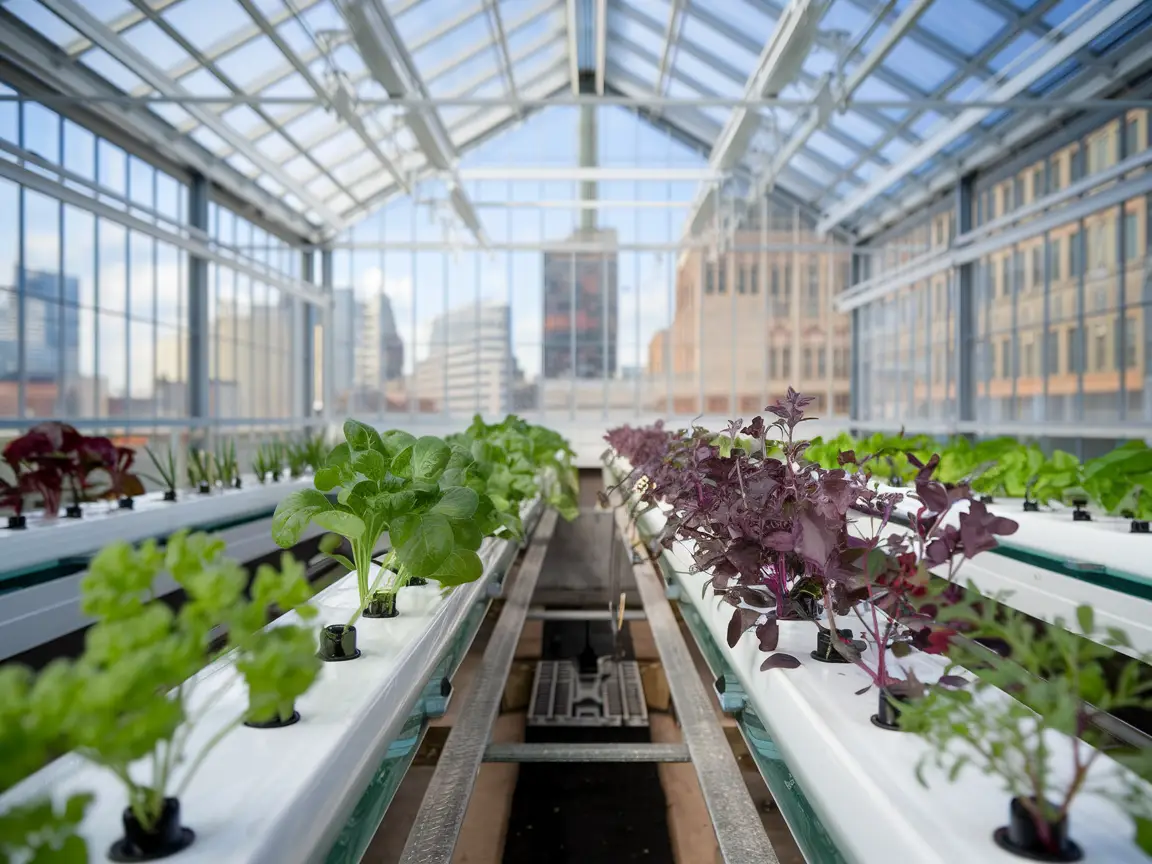The global hydroponics market is on the brink of impressive growth. Over the coming years until 2032, enormous potential is expected, driven by various factors such as technological advancements, the rising need for efficient agriculture, and growing awareness of sustainability. In this article, we examine market development, key players, and the factors driving this growth, incorporating current forecasts and market data to provide you with a well-founded perspective on the future of hydroponics.
A Growing Market: Figures and Forecasts
In 2023, the global hydroponics market reached a value of approximately USD 13.3 billion. Predictions suggest that the market will reach around USD 32.5 billion by 2032, reflecting a compound annual growth rate (CAGR) of 10.4%.[1] Other forecasts project a market volume of USD 58.3 billion by 2032, with a slightly lower annual growth rate of 7.5% over the same period.[3]
These figures indicate that hydroponics is more than a trend – it is a sustainable solution to many of the challenges facing agriculture today. With urbanization and the decreasing availability of arable land, many countries are seeking alternatives to ensure food security, and hydroponics offers a promising response to these challenges.
Growth Drivers: Why Demand for Hydroponics is Rising
1. Efficient Resource Use
One of the greatest challenges for traditional agriculture is the efficient use of water and land. Hydroponics offers a significant improvement, requiring up to 90% less water than conventional methods. Especially in times of climate change, where water is an increasingly scarce resource, this water efficiency presents a crucial advantage.
2. Technological Advancements
Advances in hydroponics technology play a central role in the market’s expansion. Innovations in lighting, automation, and nutrient management have greatly improved the efficiency and scalability of hydroponics. These technological innovations reduce the entry barriers for new operators and enable existing facilities to further increase productivity.
3. Urbanization and Local Production
With the rapid growth of urban populations worldwide, space for traditional agricultural land is becoming increasingly limited. Here, hydroponics offers an attractive alternative to grow fresh food directly where it is needed. The growing awareness of food security and the demand for pesticide-free products also play a crucial role in the rising interest in urban hydroponics.
4. Government Support and Policy Backing
In many countries, sustainable agriculture is increasingly supported by the government to enhance food security and make agriculture less dependent on climate fluctuations. Subsidies, research funding, and legal incentives help establish and expand hydroponics technologies.
Regional Variations and Focus Areas
The hydroponics market is at different stages of development in various regions of the world. North America and Europe are currently the largest markets. These regions benefit from technological advances, high purchasing power, and an increased focus on sustainability. Meanwhile, hydroponics has also gained importance in the Gulf Cooperation Council (GCC) region. Particularly in the Gulf states, which are highly dependent on food imports, there is a growing investment in hydroponic methods to increase local production. The GCC market is expected to grow from USD 202.69 million in 2023 to USD 614.05 million by 2032, representing a CAGR of 13.11%.[2]
In Asia, particularly in countries such as China and India, there is significant growth potential. These countries face a growing population and shrinking agricultural land, leading to increased demand for innovative growing solutions like hydroponics.
Key Companies and Players in the Market
The hydroponics market is led by a number of companies that contribute significantly to the growth of the industry through research, development, and technological innovations. Major players include:
- General Hydroponics: A pioneer in developing hydroponic systems and solutions.
- Am Hydro: A well-known provider of systems and nutrient solutions, serving customers worldwide.
- Nutrifield: Specializing in fertilizers and additives for hydroponic applications.
- Watercircle Hydroponics: A provider focused on sustainable, circular solutions.
- Hydrofarm: Though not explicitly named here, Hydrofarm is often a significant player in market analyses.
These companies continue to push the boundaries of hydroponics with their innovations, making the technology appealing to a broad range of users.
Market Forecasts and Opportunities
With the projected annual growth rate and continuous innovation in hydroponics, the market remains highly attractive for investors, farmers, and technology providers. Particularly in urban areas and regions with water scarcity, hydroponics offers a sustainable solution to ensure food supply.
Investments in research and development of new hydroponics technologies are steadily increasing. From smart lighting to advanced automation techniques, there are numerous innovations with the potential to further increase production efficiency and reduce operating costs. These factors could make hydroponics more economically viable in the future and contribute to solving global food security issues.
Another growing area is the development of vertical farms in urban spaces, often based on hydroponics. Vertical farming allows for maximum use of production space by growing upwards rather than outwards, which could be an answer to food supply challenges in megacities.
Conclusion: Hydroponics as Part of the Solution for Global Food Security
Hydroponics is a promising technology set to play an increasingly important role in global agriculture in the coming years. Given the growth of the global market, continuous technological advancements, and the rising demand for sustainable solutions to ensure food security, it is expected that the hydroponics market will fully realize its potential in the next few years.
While traditional agricultural methods will continue to play a significant role, hydroponics offers innovative ways to make agriculture more efficient and resource-friendly. Companies, investors, and farmers who adopt this technology early on could benefit significantly from growth opportunities.
The future of agriculture may lie in urban centers, in high-rise farms, and climate-controlled greenhouses – all places where hydroponics can be optimally utilized. The market clearly shows: the demand is there, and with ongoing technological improvements, the conditions are becoming increasingly attractive.
Sources



